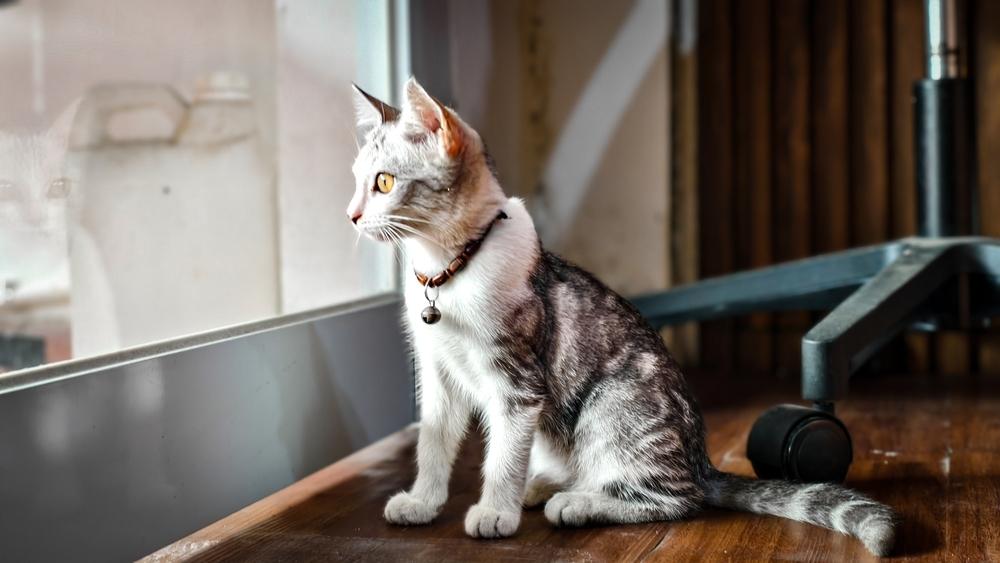

Cats are famous for seeking out the perfect sunny spot to curl up for a siesta and soak up the warm rays. As a loving pet parent, this may lead you to wonder: Can cats get sunburn? And if so, what does a cat sunburn look like? It may seem like a silly thought, but you're actually on to something. Those hours spent under the sun can add up and set your kitty up for a painful sunburn.
Read on for answers to all your feline-specific sunburn questions, including how to spot a cat sunburn, which cats are most at risk and how to prevent sunburn in cats.
What Does a Cat Sunburn Look Like?
In cats, sunburn first appears as pink or reddened skin. Beyond color change, sunburn can result in crusty skin, scabbing, blisters and seeping wounds. Since sunburns can make your cat's skin feel tender, you may observe grooming or pawing at the affected area.

Where Do Cats Get Sunburn?
Sunburn is often most noticeable and more likely to occur on the vulnerable parts of a cat's body. This includes areas with less fur, thin skin, hair loss or lighter pigmentation. Cats' ears, nose, abdomen and groin area may be particularly susceptible to burning.
Sunburn in cats can also irritate or exacerbate existing skin conditions, such as allergies, hot spots or delicate post-surgery skin.
What Puts Cats at Higher Risk of Sunburn?
Coat
"Hairless" cats, or those with fine hair coats — such as the sphinx, Devon Rex and Cornish Rex — are all particularly sensitive to the sun since they lack the protection of a full hair coat. The same goes for cats with hair loss or grooming styles that involve hair cutting or shaving. Cats with white fur have less melanin in their skin so are also more susceptible to sunburn.
Lifestyle
Outdoor cats have an increased incidence of sunburn and its consequences compared to indoor cats since they spend more time in the sun.
Age
Cats of all ages are susceptible to sunburn, but newborn kittens are particularly vulnerable.
Can Cats Get Skin Cancer?
Where there's sunburn, there's also skin cancer risk. Tumors such as squamous cell carcinomas and angiosarcomas are associated with prolonged sunlight exposure in cats. Interestingly, while melanomas occur in cats, they're rarely associated with sun damage.
Routine skin exams (with special attention to the ears and nose) at home and at your regular veterinarian appointments can help detect skin damage and tumors. Let your vet know about any suspicious skin lesions, especially those that change or are slow to heal, so they can evaluate them for skin cancer risk.
When Does Your Cat Need Veterinary Intervention?
Minor sunburns in cats are usually first-degree burns that heal quickly without intervention. If the burn doesn't resolve within a few days or appears severe enough that you consider applying ointment, seek veterinary care. Do not apply any over-the-counter ointments or home remedies until your vet weighs in.
Sunburns can cause systemic dehydration and negatively affect your cat's internal organs, which requires prompt attention and care. While sunburn is rarely an emergency, blistering in multiple areas, lethargy and fever are all signs your cat needs immediate veterinary care.
How Can You Prevent Sunburn in Cats?
The easiest way to prevent sunburn in cats is to help them avoid excessive sun exposure. Some ways you can limit your cat's sun exposure include:
Install ultraviolet window screens, especially on windows near cat perches.
Always offer shade if your cat spends time outdoors (e.g., in a catio) along with fresh water to prevent overheating.
Keep your cat indoors during peak sunshine hours between 10 a.m. and 4 p.m.
Practice sun protection for cats year-round, not just in the summer months.

Sunscreen for Cats
Your vet may recommend sunscreen occasionally for certain cats. That said, always speak with them first to see if sunscreen is warranted before using it on your cat. Messy at best, it can be difficult to keep your cat from grooming and ingesting the product, making formula safety critical.
Zinc oxide and salicylates, such as octyl salicylate and ethyhexyl salicylate, are toxic to cats. Products containing titanium dioxide as an active ingredient may be safe for cats, but always check with your veterinarian first and ask for advice about choosing a cat-specific formula.
Sunburn in Cats: A Sunny Outlook
Can cats get sunburn? While the answer is yes, most indoor cats with full hair coats aren't at high risk, as fur naturally protects against sunburn. But if your cat has little to no fur or is sporting a summer lion cut, take extra care to avoid sunburn and skin cancer. Routine exams, both at home and at your vet's office, are key for early detection.
In the meantime, you can take small steps to shield your cat from sun damage by knowing their susceptibility and limiting those sunny cat naps to off-peak daylight hours. Together, you and your veterinarian can protect your cat's health from head to toe.






















